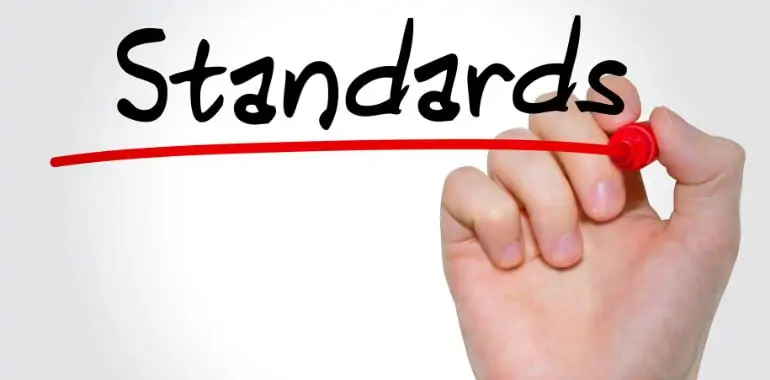Author: Anne Holland, CEO and Founder
This article is the first in a series of blog posts designed to help medical device startup companies lean into quality.
“Insanity is doing the same thing over and over again and expecting different results.”
– Author unknown
While we know that Albert Einstein did not actually say these oft-quoted words of wisdom, medical device manufacturers would do well to heed this sage advice.
Leaders of medical device startups who hesitate to think about quality standards and regulatory compliance from the get-go risk having to repeat expensive design and production work, or even worse, start over with a new prototype or experience a delay due to incorrect testing. In other words, they risk beginning from scratch to avoid the non-compliance issues uncovered during the first go-round.
For example, manufacturers who wait until their medical device is already in development before they start documenting processes and procedures may be non-compliant with design and purchasing controls. Such an oversight can lead to lost revenue and delay getting your product to market within your intended timeline.
In an ideal world, a medical device manufacturer would engage a quality system and regulatory partner to guide them throughout the product life cycle, from the initial design concept, to when the product goes to market, and to ensure post-market compliance.
Startups often come to QA Consulting with two primary questions: how long does it take and what is the cost? They see this area of their business as a nuisance, simply paperwork and boxes to check off.
I counsel clients that regulations and industry standards exist to help them get safe and effective medical devices to market efficiently. Doing their homework upfront will decrease the likelihood of delays that lead to lost revenue.
Part of that homework is understanding the medical device industry standards landscape. I’ve compiled this basic primer to help startups get started with quality systems and regulatory affairs.
Regulations vs. Standards
Let’s start with the difference between regulations and standards.
Regulations are rules of law issued by a governing body or agency over which it has authority.
Standards (also known as industry or consensus standards) are voluntary and typically developed by nonprofit organizations for use by the private sector and government authorities.

Where it can get confusing is that standards are often referenced in the regulatory process.
Even though industry standards are voluntary, and you’re not necessarily required to follow them for FDA approval, that’s not an optimal strategy. If you do not follow the consensus standards, you have to make a strong case to the FDA why you did not do so. In the immortal words of Star Trek, resistance is futile.
Therefore, understanding the basics of standards is critical to getting your medical device to market. I’ll dive more in-depth into regulations in a future post.
Standards Organizations
Get to know the organizations that develop standards for the medical device market.
ISO
Based in Geneva, Switzerland, the International Organization for Standardization (ISO) is an independent, non-governmental organization with a membership of 165 national standards bodies established in 1947.
Through its members, ISO brings together experts to share knowledge and develop voluntary, consensus-based, market relevant International Standards that support innovation and provide solutions to global challenges.
ANSI
The American National Standards Institute (ANSI) is the official United States representative to ISO. As a founding member of ISO, ANSI plays an active role in its governance.
ANSI’s mission is to enhance the global competitiveness of U.S. business and the U.S. quality of life by promoting and facilitating voluntary consensus standards and conformity assessment systems, and safeguarding their integrity.
AAMI
The Association for the Advancement of Medical Instrumentation® (AAMI) is a nonprofit organization founded in 1967. AAMI is the primary source of consensus standards, both national and international, for the medical device industry, as well as practical information, support, and guidance for healthcare technology and sterilization professionals.
IEC
The International Electrotechnical Commission, founded in 1906, is the world’s leading organization that prepares and publishes International Standards for all electrical, electronic, and related technologies.
Do You Know Your Medical Device Standards?
The following are essential standards every medical device manufacturer should understand the basics of:
- ISO 13485 sets out the requirements for a quality management system specific to the medical device industry.
- ISO 14971 specifies the terminology, principles, and a process for risk management of medical devices.
- ISO 10993 establishes the general principles governing the biological evaluation of medical devices.
- IEC 60601 applies to the basic safety and performance of medical electrical equipment and services in the home healthcare environment.
- IEC 62304 defines the life cycle for medical device software.
ISO standards are reviewed at least every five years to determine if revisions are needed to remain current in the marketplace. Medical device manufacturers must comply with the most recent revision of the standard, and therefore must stay-up-to-date. This state of continually evolving standards is one of the primary reasons startups often select a consulting partner with specialized expertise instead of handling them independently.
If necessary, ISO Technical Committees also issue Technical Report (TR) guidance on the application of specific ISO standards. For example, ISO/TR 24971 provides guidance on the application of ISO 14971.
As it relates to federal regulations in the United States, the U.S. Food & Drug Administration (FDA) typically adopts ISO standards. Here is the complete list of the FDA’s Recognized Consensus Standards. Depending on the classification of the medical device product you’re attempting to bring to market, different standards may apply.
Right-Size Your Quality and Regulatory Compliance Strategy
When it comes to medical device safety, there’s no such thing as minimally compliant. While it’s easy to be non-compliant for failing to meet industry standards, you can just as easily over-think your strategy and find yourself mired in unnecessary documentation.
The secret to an effective strategy is to right-size your medical device quality systems to meet your company’s goals and objectives.
In a crowded marketplace, it’s critical that your medical device startup process focuses on getting products to market quickly and efficiently while still maintaining a devices’ safety and integrity.
Our team has considerable experience in FDA consulting and guiding startups. During our 20 years in business, we’ve helped manufacturers bring various medical devices to market, including catheters; orthopedic implants for the spine, hip, and knee; transcutaneous electrical nerve stimulation (TENS) units; and more.
Lean into our medical device quality consulting and regulatory experience to right-size your strategy.
Be on the lookout for future posts to help startups navigate federal regulations in the U.S. and around the world.






